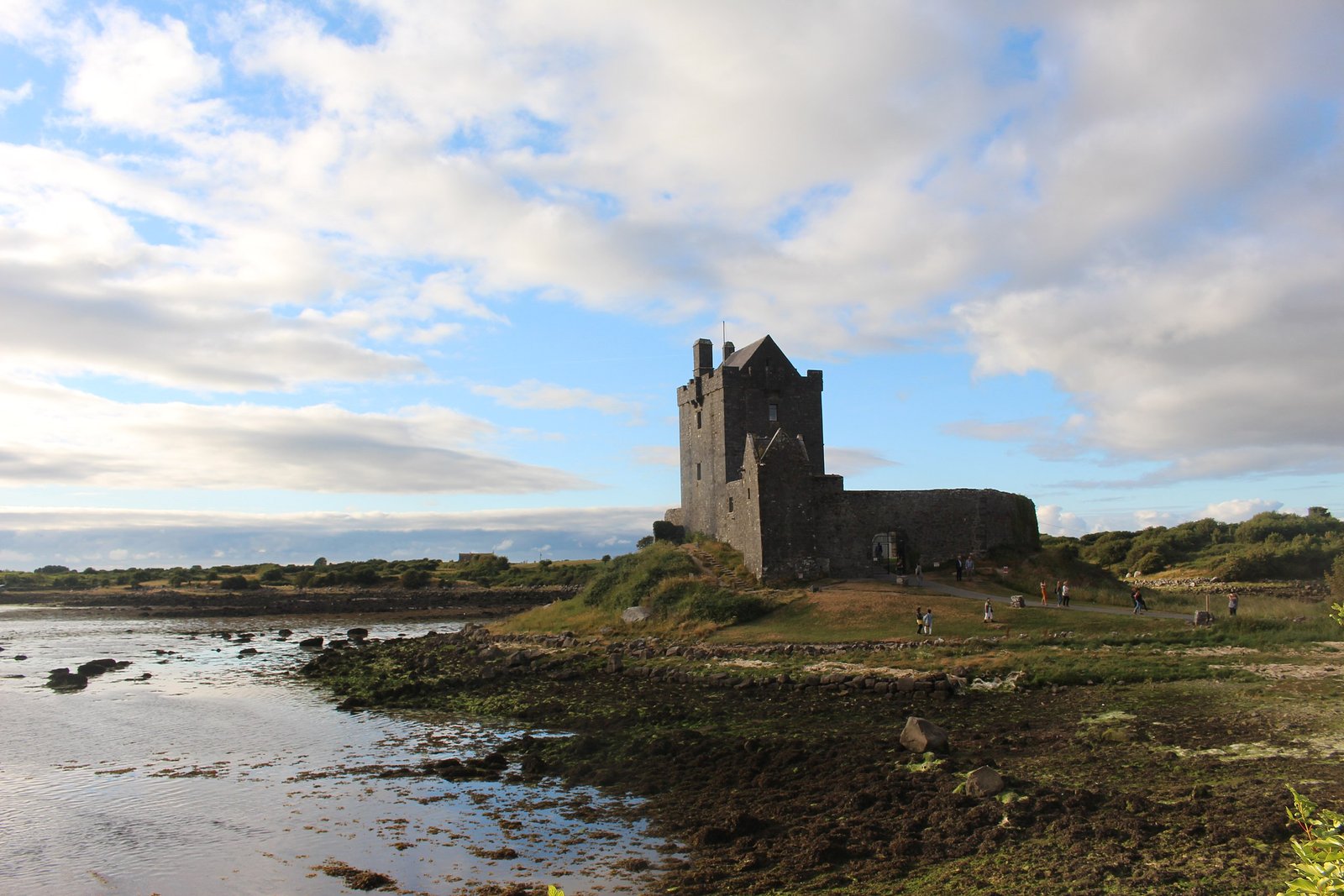
The Legends of Guaire The Hospitable, Saint Patrick, Niall of the Nine Hostages, and My Great Grandmother Catherine Hynes
My ancestry has people from nearly half the countries in today’s European Union. But of all those countries, it is Ireland that I have identified with the most. I have enjoyed all the superficial trappings of Ireland in America, from reading Yeats and Joyce, to drinking Guinness, and celebrating Saint Patrick’s Day.
So it was surprising to me that my Hughes side of the family seems to be Welsh instead of Irish, as I wrote in an earlier post. But I do, indeed, have Irish roots from another branch from my father’s family tree. My great-grandfather Nelson Hughes married a Catherine Hynes whose family came directly from Ireland to Canada and then on to Minnesota and Wisconsin, where they finally settled.
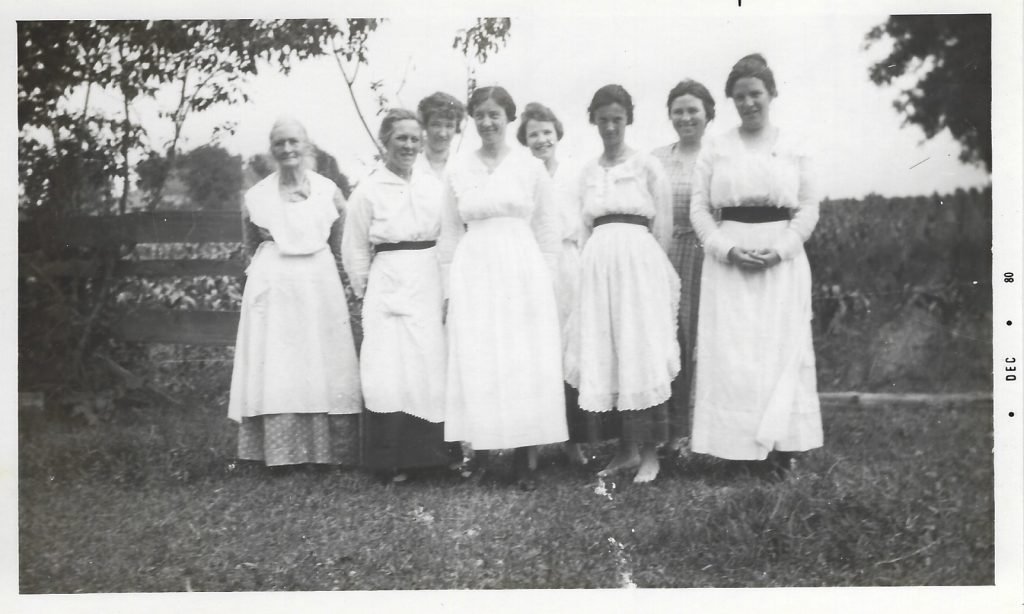
The Hynes (O’Heynes, O’Hoynes) surname (or Hines, Hine, and Hyne variations) has roots both in England and Ireland. In England surnames were often derived from where you lived or what you did. This is the case for the English version of Hynes, which had the meaning of servant or lad in Old English.
Little is known about the Hynes family in Canada from when they arrived in the 1840s until they moved to the U.S. in about 1869. Even less is known of the lives of Catherine’s parents Elizabeth and Joseph in Ireland, other than they were from a place then known as Queen’s County.
Fortunately Ireland over the last 2 millennia has had very tight clans with oral histories passed down from generation to generation. So we can get some sense of who the Hynes (Heynes, O’Heynes) clan was and where they were located from oral tradition and various official written records. This history includes the battles the O’Heynes waged against the Anglo-Norman invaders. It also includes the later oppression our specific line of Hynes ancestors suffered under the infamous King Henry VIII and his children.
The History of the Irish Clans Related to the Hynes Clan
In Ireland surnames have been passed down from one’s father as the Irish organized their society around familial clan relations. Everyone knew who their "people" were. The Hynes Clan seems to have originated in the 10th century in County Galway, on the west coast of Ireland. This is roughly the time that Irish clans adopted surnames. According to SurnameDB, Hynes comes from the Old Gaelic surname O' hEidhin.

This O’hEidhin clan was the main clan of Galway, descended from "Guaire the Hospitable," a king of Connaught from roughly 655 A.D. Guaire was one of the early line of kings from the petty kingdom of Uí Fhiachrach Aidhne. This was a small kingdom located in the south of Galway, within the larger Connaught Kingdom (which is now one of Ireland’s 4 provinces). Guaire ruled as King of Connaught until 663 and was buried in the Clonmacnoise monastery in County Offaly that his kingdom patronized.
This is what the Irish Times said in 1930 regarding Guaire’s famous hospitality:
He is celebrated by all the ancient annalists for his hospitality to all classes and his charity to the poor. Hence it passed into a proverb in that part of Ireland — in fact in all Galway— speaking of a good host that he was as "generous as Guaire", and the Irish poets in their figurative language represented that his right hand had become longer than his left in consequence at it being so constantly extended in giving charity and alms to the poor.
According to the book The Hynes of Ireland, Guaire’s famous ancestors include King Dahi, the last of the pagan Irish kings. According to legend, Dahi fought many battles on the European mainland before being killed by lightning in the Alps.
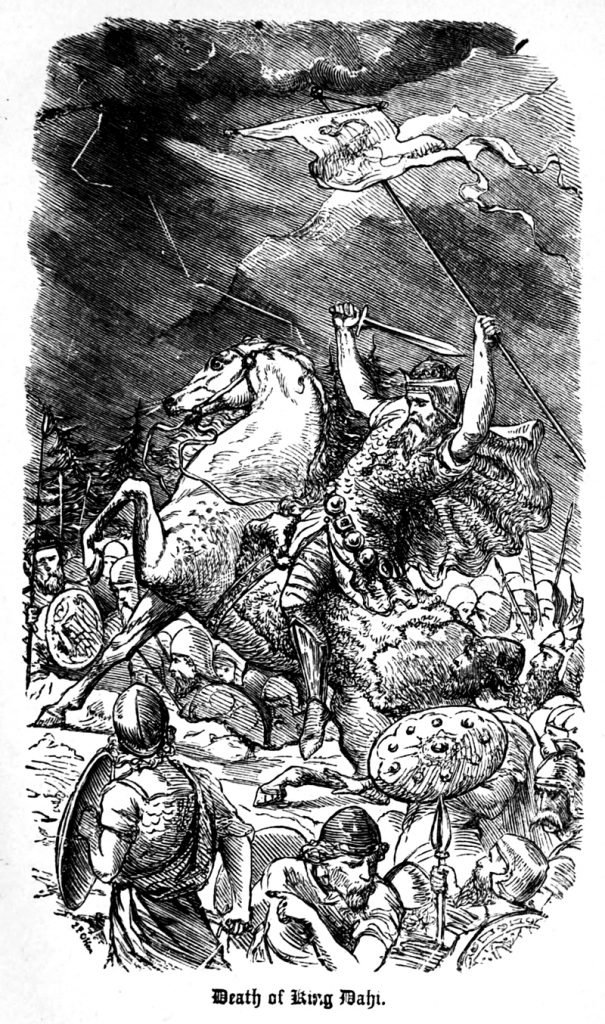
Another of the great kings among Guaire’s ancestors is apparently Niall of the Nine Hostages. Legend has it that, during a raid in Wales, Niall took a young boy hostage and brought him to Ireland. That boy escaped but later returned to Ireland to become its patron saint, Saint Patrick.
The 18th Century Hynes Family in Laois (Queen's County), Ireland
It is quite a leap from the 7th century to the 19th century when our Hynes family departed Ireland. But the general history of the Hynes surname above is perhaps a nice surrogate for the unknowns in our 19th century Hynes/0’Heynes’ family life in Queens County.
Laois is the current and traditional name of our Joseph Hynes family’s home parish/county. Back in the 1840s, it was called Queen’s County, named in the 1500s for Queen Mary. Since the border of County Galway is just 50 miles from County Laois it makes sense that our Hynes people were spread across this area and in fact, the mid 1800s tax records show this as the case, with Galway and Clare County having the most listings for people named Hynes.
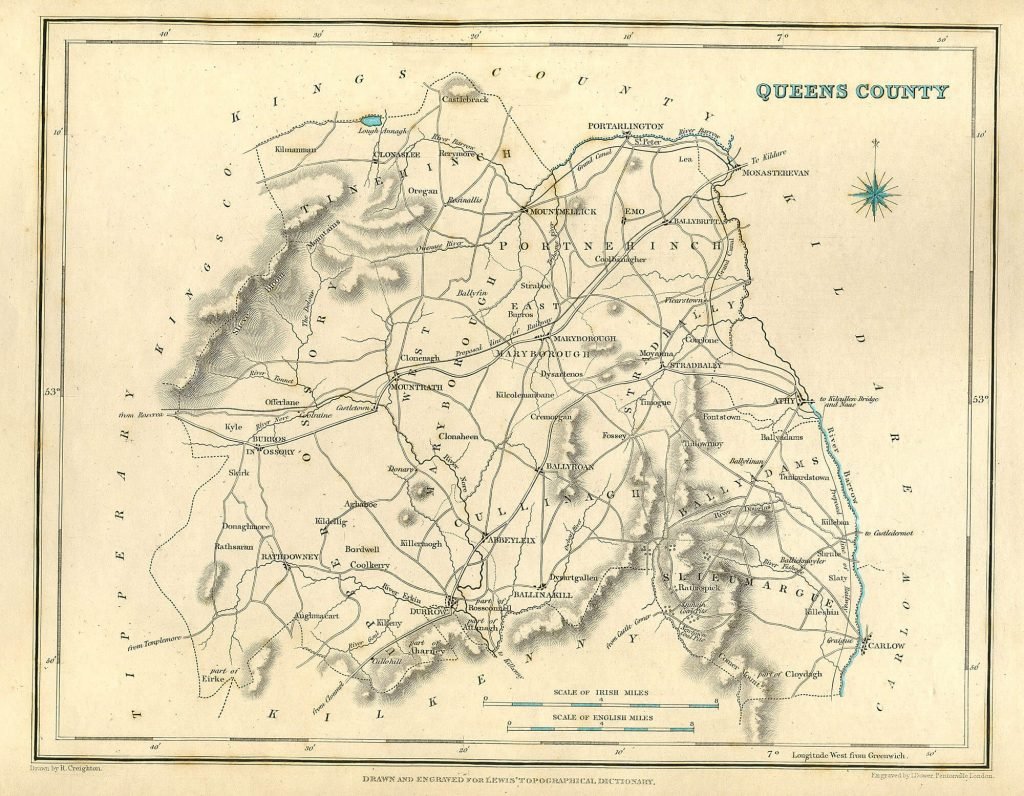
It is likely that our Hynes family were tenant farmers on land owned by English protestant landlords. Most of the land changed from Irish Catholic hands to English Protestant hands from the 1500s to 1703, when only 14% of Irish land was in Irish Catholic hands. A similar cultural and language shift also began during this time.
From the 16th century, English became used as the primary language of administration in Ireland, so the Gaelic names became Anglicized, with English spellings taking hold. This began a period of English colonization of Ireland. The succeeding centuries saw much change. Today only 2% of the people speak Irish Gaelic every day, but the county with the highest percentage of people able to speak Gaelic is Galway County. And Galway County has the highest concentration of people with Hynes surnames in Ireland today.
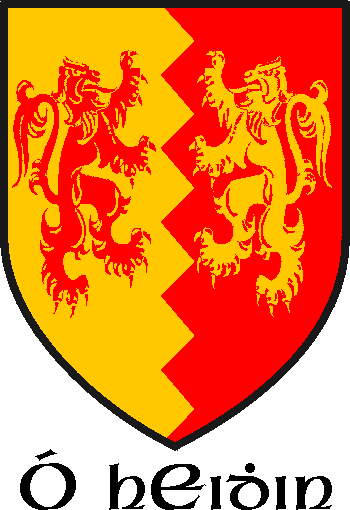
The Anglo Norman Invasion of Ireland
Ireland was England’s first colony. After William the Conqueror had taken control of England in 1066, his heirs had difficulty maintaining control of the English lands. Two civil wars ensued until King Henry II, a great grandson of William, was able to re-establish control. Henry solidified his lands around his native Anjou (northern France), before putting down unrest in Wales and Scotland.
King Henry II invaded Ireland in 1169 when Dermot MacMurrough, the former Irish King of Leinster, asked for help in retaking his throne. In 1171 Henry invaded again to take a larger area. Lands were given over to Henry’s sons and other nobles but soon rebellions in France took the king’s attention away from Ireland (there were many civil wars and rebellions in England between the 1100s and 1600s.)
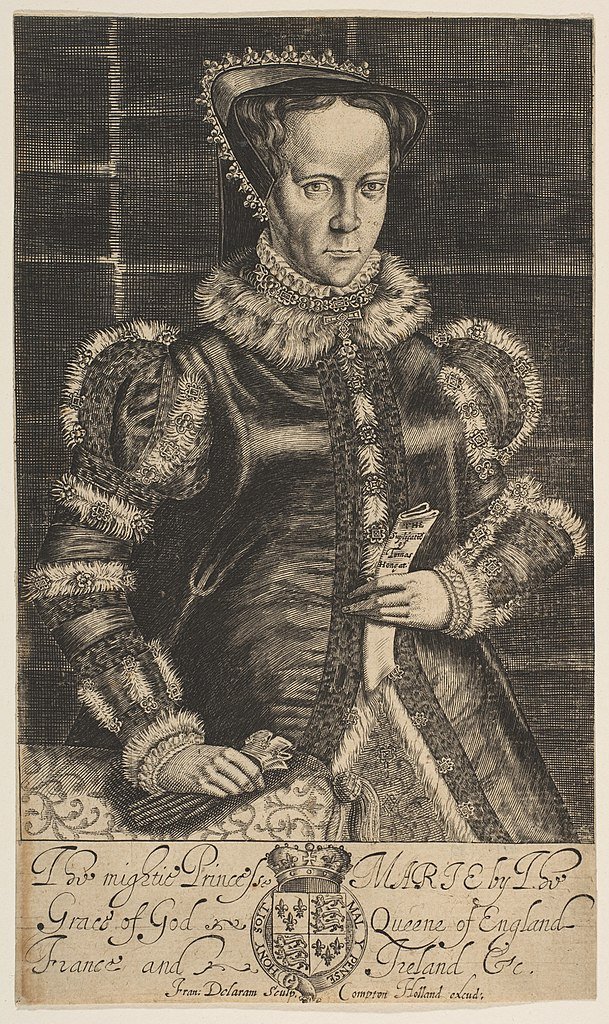
Queen Mary I, aka Bloody Mary, Colonizes My Ancestors’ County
Local Irish chieftains and their clans continued to rule Ireland locally under the English rule. In the 1500s, King Henry the VIII extended titles and property guarantees to these chieftains for their loyalty. Henry also declared himself King of Ireland. His daughter Queen Mary I, who became Queen of Ireland and England after Henry and his son passed, continued to focus on Ireland by establishing the first plantation (or colony) with English lords taking over land from Irish clans.
The English specifically took lands from the clans that had rebelled. They formed Queens County from Laois lands taken from the O’Moores clan, while King’s County was founded in Offaly from land once held by the O’Connors. Only English settlers could work and settle on this land, with the Irish all pushed into less fertile areas. The clans still resisted these plantations, attacking the settlers and anyone assisting them. In many areas this made the plantations unprofitable as the costs of defending the land outweighed the benefits.
Mary’s successor, her ½ sister Queen Elizabeth I, is the one who spread Protestantism to Ireland when she encouraged Scottish Protestants to migrate there. This led to the demographic changes that resulted in the British dividing Northern Ireland from Ireland. The Ulster plantation in today’s Northern Ireland was the only one to become successful over the long-term. Many Scots who couldn’t make a living there continued on to America.

Ireland Finally Gains Freedom from the English kings
After centuries of resistance and a nearly 3 year Irish War of Independence (1919-1921), the area of today’s Ireland became an independent Republic in 1922. They kept northern Ireland as part of the United Kingdom, but the Hynes ancestral lands, like Ardrahan Castle, lost to the Anglo-Normans in 1253, were now back in Irish hands.
Never having been to Ireland myself, I’m not sure if the Irish clans still hold a grudge against the Norman and Tudor monarchs—Henry II, Henry VIII, Mary I, and Elizabeth I—and their descendants for their 700 year rule over Ireland. However, one of their descendants is decried for his infamous invasion of another country during my lifetime.
Yes, I’m talking about my old political foe, Y2K problem, and cousin President George W. Bush. George and his Bush clan are direct descendants of Henry II and cousins to Queens Mary I and Elizabeth I.
I only had to endure 12 years under King Henry’s descendants, George the elder and George W. But I feel for my 2nd great grandfather Joseph Hynes, who had to endure 69 years under English rule.
According to their gravestones and US census records, Joseph and Elizabeth were from Queen’s County, Ireland. Joseph was born in 1800 and Elizabeth in 1806 and they were married in October 1828 in the Abbeyleix and Ballyroan Parish in the Diocese of Kildare and Leighlin.

They had 3 or 4 children in Ireland and 3 more in New Brunswick, Canada in the late 1840s. Based on their children’s birthdates it seems they escaped to Canada during the first year or two of the Great Potato Famine (1845-46) that killed over 1 million souls.
The only inkling of the Hynes’ family life in Canada is a listing of a Joseph Hines in the 1861 Canadian census living in Kingston, Kings County, New Brunswick. This Joseph is living on a ½ acre of land valued at $200 with one milk cow and 12 sheep. Such was the lot of many Irish in North America as they immigrated in such great numbers it was difficult to find land or adequate housing for them all.
New Brunswick and Maine were big centers for logging at this time so it’s possible this was Joseph’s work there. Working “on the logs” was the work that the Hynes boys took up in the 1860s and 70s after they moved to Stillwater, MN.
Some of the Hynes’ children may have moved to Stillwater before the others as they list different arrival times on US Census records from the 1880s to the 1930s. This was common among those who migrated from Canada to the US in those days. A child would move to a new city, get established, and then the rest of the family would move on. In 1870, we find the Hynes family living in Stillwater in the same house as daughter Mary and her husband, Thomas Mackey. In addition, Nelson Hughes is living there as a boarder, listed just after his future wife’s name. But this is the last we see news of Joseph, Elizabeth, and Thomas Mackey as they all passed away over the next several years.
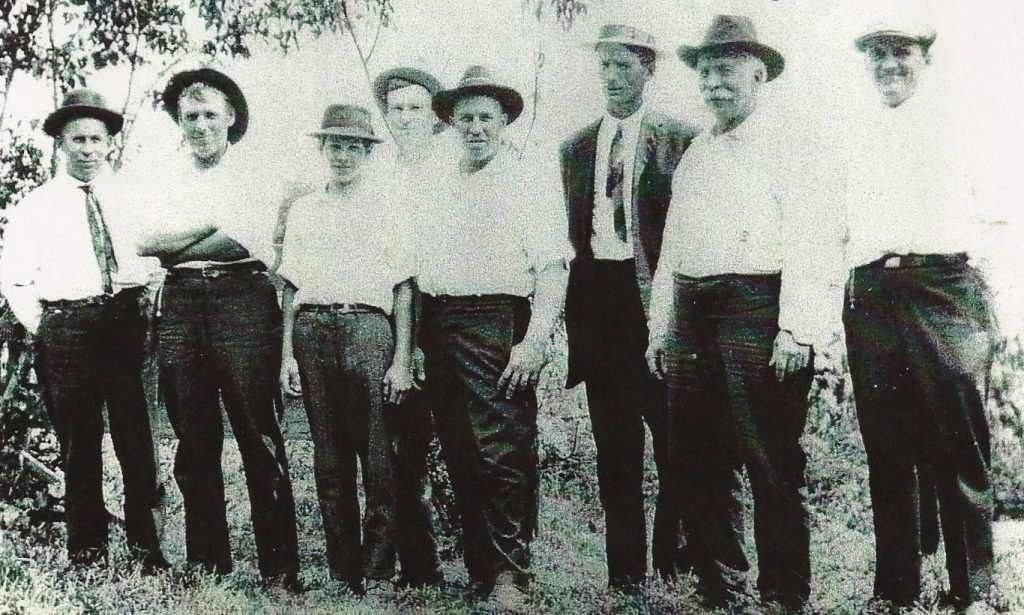
Nelson and Catherine's Life in America
My Aunt Orpha has written about Nelson and Catherine’s life in Stillwater, MN and across the river in Wisconsin. Newspaper clippings and census records also show Catherine and Nelson worked hard throughout their lives. In the 1851 Canadian Census Nelson is listed as a “laborer” at age 6. In Minnesota he worked in Sauntry & Tozer’s logging camp until he crushed his foot in February 1880, according to a note in The St. Paul Globe. Then, according to Aunt Orpha, he hauled barrels by horse and wagon from the factory at the Minnesota State Prison to St. Paul. Later he and Catherine bought a farm in Houlton, Wisconsin.
In Houlton, Catherine worked as a midwife in the local community. She also had a talent for growing herbs and creating various home remedies with them for her children and neighbors. These included, “Penny Royal stewed for fevers, goose grease and camphor for chest colds, bark from elm tree made into a slippery goo, burdock for stomach trouble, salt pork for infection,... and mustard plasters and castor oil for muscle pain” (Gorman, O., n.d.)
On the farm they grew hay and also raised sheep for the wool. They sheared the sheep and then washed and dried the wool. Afterwards, Catherine carded and spun the wool into yarn for making clothes for all her children. She knitted long socks for her 6 girls and other clothing for all the children.
Their life was a simple one and yet it is amazing to think how grand it must have felt having overcome all the obstacles they faced in their move from Canada to Minnesota and then across the river to Wisconsin. Just another slice of the American dream realized.

In the next installment we will travel back to Nelson’s earlier life in Canada and learn about his small part in the grand finale of the Civil War.
Thanks for reading. Until next time.
For Further Reading on Irish Genealogy and History
To read more about the Hynes Clan see James Patrick Hynes' book.
The Hynes of Ireland, 2016, James Patrick Hynes

